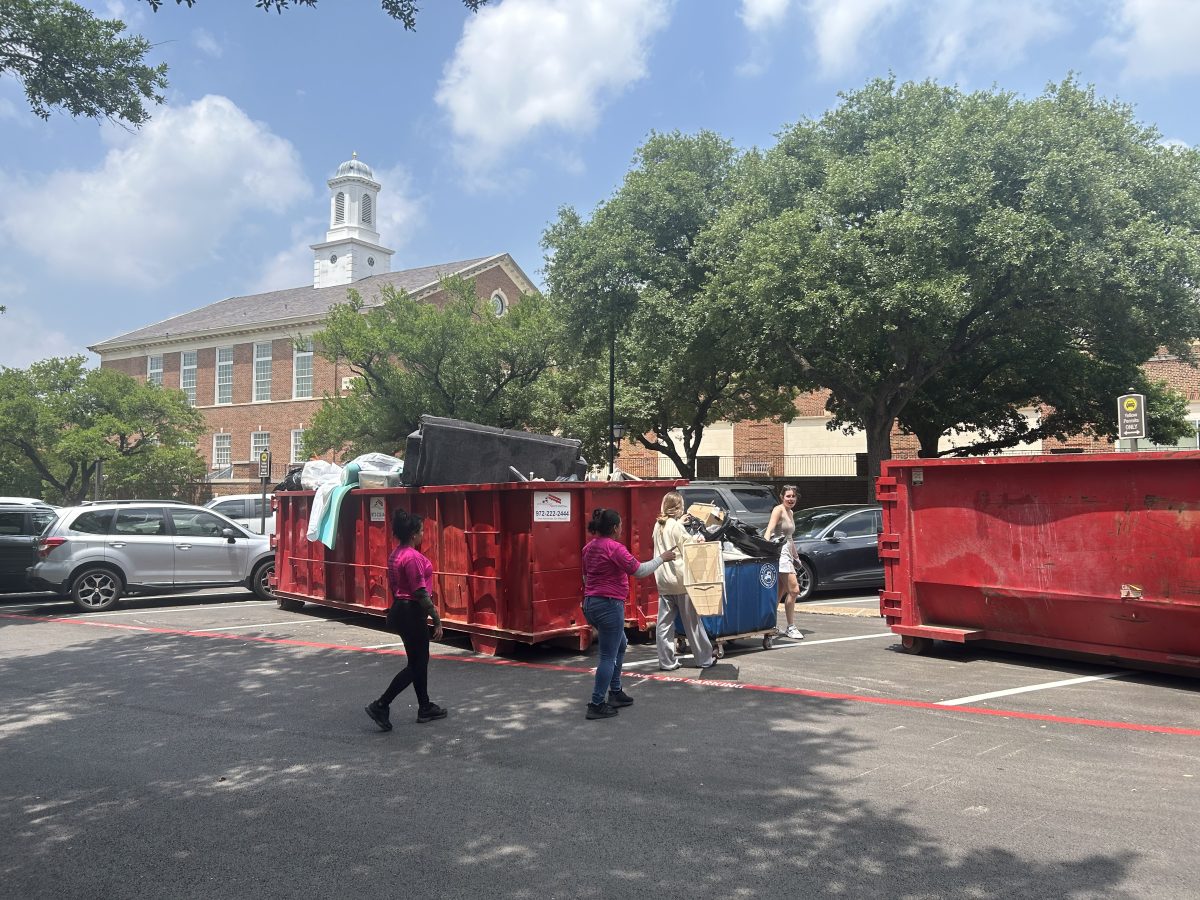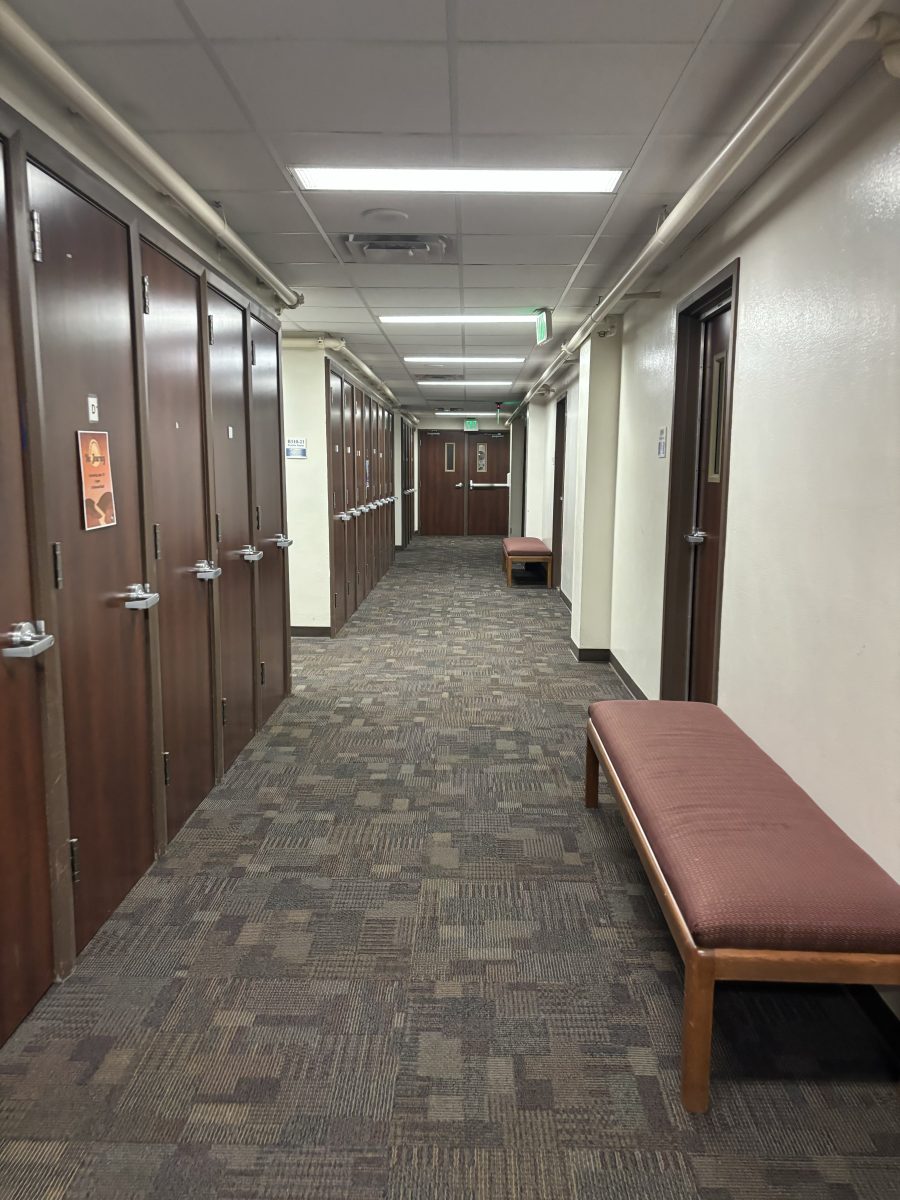The old site of the SMU bookstore lay vacant for almost a year. However, after a flurry of construction this summer, the division of journalism has used the space to open the first university-level digital newsroom in the country.
The newsroom, which will be used in classes this fall, will combine print, broadcast and Internet digital media to provide SMU’s journalism students with a newsroom experience that reflects growing trends in the industry at large.
“Most online newspapers are just newspapers on computer. We want to ask what we can do with this medium,” says journalism professor, Susan Krasnow. “This is important not only to the students but for the industry.”
Funding for the newsroom was secured as part of a $5 million gift from the Belo Foundation, the charitable arm of Belo Corporation. The gift was the largest the organization has ever given to any group. Aside from endowing the position of the division’s new chair Chris Peck, $3 million of the gift went towards the newsroom’s development.
“Given the importance of the information age in today’s society, students, faculty, and the media industry in general and our community will all benefit from the advantages of a greatly enriched curriculum,” said Ward L. Huey Jr., SMU trustee and Belo Foundation board member.
In North Texas, the Belo Corporation owns and manages WFAA-TV Channel 8, The Dallas Morning News, and Texas Cable News. The company, which manages other media outlets across the nation, exemplifies a growing trend towards convergence of different media in the industry.
With the rise of the Internet and the World Wide Web as well as a tendency towards large corporations buying up smaller media outlets, there is a greater demand for journalists who comfortable writing for print publications, appearing on radio and television broadcasts and working with the expanded multimedia capabilities of the Internet.
To train their students toward that goal, Peck said that all journalism professors are encouraged to teach some elements of convergence in their classes and to encourage the use of the digital newsroom in their coursework.
“This is a really extraordinary opportunity for our students,” said Krasnow, who is teaching a class this semester that will use the newsroom to put together a guide to SMU.
The guide, which will appear online, will have basic information about the university and the surrounding area using video, audio and text in a manner that will appeal to student readers.
“The new student handbook is a useful document, but you have to wade through so many therefores and wheretofores,” Krasnow said. “My goal is for us to create something that is an integral part of the students’ lives with useful information that they can’t find anywhere else.”
Krasnow hopes that her class will use the guide to address questions from when to drop a class to what the best jobs are on campus. She’d also like the site to provide a community forum for students to share ideas, rides and swap notes.
“The bulletin board down stairs in the student center is symbolic of how students are communicating,” she said. “Dozens of students are desperately looking for someone to look at this piece of piece of paper before someone rips it down.”
Aside from the SMU guide, two new professors have been hired to help manage the newsroom. Jason Silverstein, manager of special projects at Yahoo!, has been hired to manage the technical aspects of the newsroom, while Michelle Houston, formerly of Broadcast.com, will teach basic video and audio production classes using the new technology.
By next semester, Peck expects that students will be broadcasting and producing their own television cable news shows for broadcast on the SMU Channel, which airs on channel 7 in the Park Cities.
Within the next year, students may possibly produce video from campus to be used on other media outlets such as TXCN.
As the department continues to develop the newsroom’s technology, Peck is optimistic that graduates of the division of journalism will be more marketable in the industry.
“We’re working towards putting SMU on a path to having a program aligned with the needs of 21st century journalism,” he said. “We’re taking the core values and adapting to today’s media environment so that our students will be in high demand in the coming decades.”









